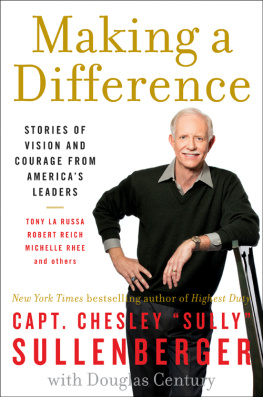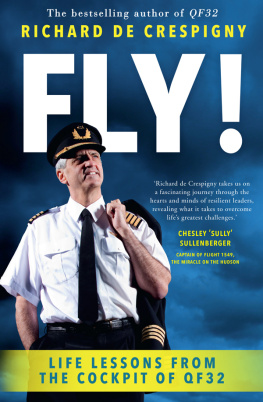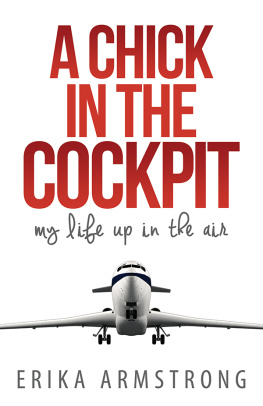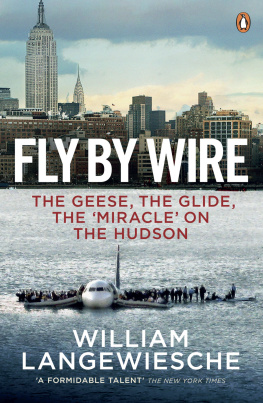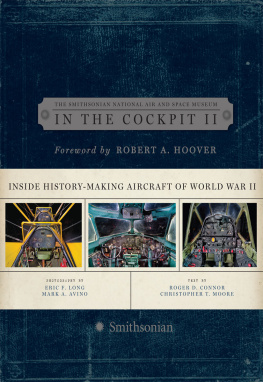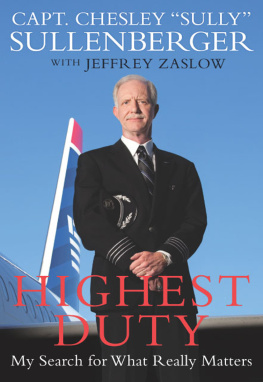Captain Chesley Sully Sullenberger
with Jeffrey Zaslow
HIGHEST DUTY
My Search for What Really Matters
Highest Duty is dedicated to my wife, Lorrie, and my daughters, Kate and Kelly. You are the three most important people in my life, and I love you more than I can express in words.
This book is also dedicated to the passengers and crew of Flight 1549 and to their families. We will be joined forever because of the events of January 15, 2009, in our hearts and in our minds.
1. A FLIGHT YOUD NEVER FORGET
THE FLIGHT LASTED just a few minutes, but so many of the details are rich and vivid to me.
The wind was coming from the north not the south, which was unusual for that time of year. And my wheels made a distinct rumbling sound as they rolled across the rural Texas airstrip. I remember the smell of the warm engine oil, and how it drifted into the cockpit as I prepared to take off. There was also the smell of freshly cut grass in the air.
I have a clear recollection of how my body feltthis heightened sense of alertnessas I taxied to the end of the runway, went through my checklist, and got ready to go. And I recall the moment the plane lifted into the air and, just three minutes later, how I would need to return to the runway, intensely focused on the tasks at hand.
All these memories are with me still.
A pilot can take off and land thousands of times in his life, and so much of it feels like a speeding blur. But almost always, there is a particular flight that challenges a pilot or teaches or changes him, and every sensory moment of that experience remains in his head forever.
I have had a few unforgettable flights in my life, and they continue to live in my mind, conjuring up a host of emotions and reasons for reflection. One took me to New Yorks Hudson River on a cold January day in 2009. But before that, perhaps the most vivid was the one Ive just described: my first solo flight, late on a Saturday afternoon at a grass airstrip in Sherman, Texas. It was June 3, 1967, and I was sixteen years old.
I hold on to this one, and a handful of others, as I look back on all the forces that molded me as a boy, as a man, and as a pilot. Both in the air and on the ground, I was shaped by many powerful lessons and experiencesand many people. I am grateful for all of them. Its as if these moments from my life were deposited in a bank until I needed them. As I worked to safely land Flight 1549 in the Hudson, almost subconsciously, I drew on those experiences.
FOR A few months when I was four years old, I wanted to be a policeman and then a fireman. By the time I was five, however, I knew exactly what I wanted to do with my lifeand that was to fly.
I never wavered once this possibility came into my head. Or more precisely, came over my head, in the form of jet fighters that crisscrossed the sky above my childhood home outside Denison, Texas.
We lived by a lake on a sparse stretch of land nine miles north of Perrin Air Force Base. Because it was such a rural area, the jets flew pretty low, at about three thousand feet, and you could always hear them coming. My dad would give me his binoculars, and I loved looking into the distance, to the horizon, wondering what was out there. It fed my wanderlust. And in the case of the jets, what was out there was even more exciting because it was coming closer and closer at a very high rate of speed.
This was the 1950s, and those machines were a lot louder than todays fighters. Still, I never came across people in my part of North Texas who minded the noise. We had won World War II not long before, and the Air Force was a source of pride. It wasnt until decades later, when residents near air bases began talking about the noise, that pilots felt the need to answer the complaints. Theyd sport bumper stickers that said JET NOISE: THE SOUND OF FREEDOM.
Every aspect of airplanes was fascinatingthe different sounds they made, the way they looked, the physics that allowed them to rocket through the sky, and most of all, the men who controlled them with obvious mastery.
I built my first model airplane when I was six years old. It was a replica of Charles Lindberghs Spirit of St. Louis. I read a lot about Lucky Lindy and understood that his flight across the Atlantic wasnt really about luck. He planned. He prepared. He endured. Thats what made him heroic to me.
By 1962, when I was eleven years old, I was already reading every book and magazine I could find that talked about flying. That was also the year I took my first plane ride. My mom, a first-grade teacher, invited me to accompany her to a statewide PTA convention in Austin, and it was her first plane ride, too.
The airport, Dallas Love Field, was seventy-five miles south of our house, and when we got there, it seemed like a magical place filled with larger-than-life people. Pilots. Stewardesses. Well-dressed passengers with somewhere to go.
In the terminal, I stopped at the newly installed statue of a Texas Ranger. The plaque read ONE RIOT, ONE RANGER, and told the apocryphal story of a small-town disturbance in the 1890s. A local sheriff had called for a company of rangers to stop the violence, and when only one ranger showed up, the townspeople were taken aback. Theyd asked for help and now wondered if they were being denied. How many riots do you have? the ranger allegedly asked. If yall got just one, all you need is one ranger. Ill take care of it.
I also saw another hero that day at the airport. I had been enthralled by the early Project Mercury space missions, so I was excited to spot a short, thin man walking through the terminal. He was wearing a suit, a tie, a hat, and his face was completely familiar to me. I recognized him from television as Lieutenant Colonel John Shorty Powers, the voice of Mission Control. I couldnt bring myself to approach him, though. A guy who had all these astronauts to talk to didnt need an eleven-year-old kid tugging at his jacket.
It was a cloudy day, a little rainy, and we walked out on the tarmac to climb a staircase onto our Braniff Airways flight, a Convair 440. My mom wore white gloves and a hat. I was in a sport coat and slacks. Thats how people traveled then. In their Sunday best.
Our seats were on the right side of the aircraft. My mom would have loved to look out the window, but she knew me. You take the window seat, she said, and even before the plane had moved an inch, my face was pressed against the glass, taking everything in.
As the plane sped down the runway and began to rise, I was wide-eyed. My first thought was that everything on the ground looked like a model railroad layout. My second thought was that I wanted this life in the air.
It took a few more years for me to return to the skies. When I was sixteen, I asked my dad if I could take flying lessons. Hed been a dental surgeon in the Navy during World War II. He had great respect for aviators, and he clearly saw my passion. Through a friend, he got the name of a crop-dusting pilot named L. T. Cook Jr., who had a landing strip on his property nearby.
Before World War II, Mr. Cook had been an instructor in the federal governments Civilian Pilot Training Program. At the time, isolationists didnt want the United States getting involved in the war in Europe. But President Roosevelt knew the United States was likely to enter the conflict and would need thousands of qualified pilots. Starting in 1939, veteran fliers such as Mr. Cook were charged with training civilians so theyd be ready when and if war was declared. The program was controversial at the time, but as things turned out, all of those prepared pilots helped the Allies win the war. Mr. Cook and pilot trainers like him were the unsung stateside heroes.
When I met him, he was in his late fifties, and a no-nonsense, all-business kind of man. Most of his time was spent crop dusting, but if he saw someone who seemed to have the smarts and temperament to fly, hed take him on as a student.


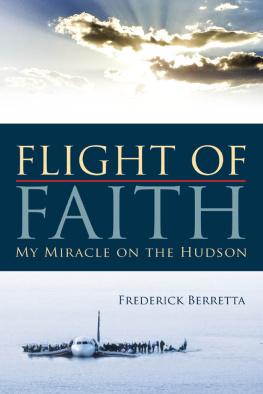
![Captain Chesley B. Sullenberger III - Sully [Movie Tie-In] UK: My Search for What Really Matters](/uploads/posts/book/404353/thumbs/captain-chesley-b-sullenberger-iii-sully-movie.jpg)

